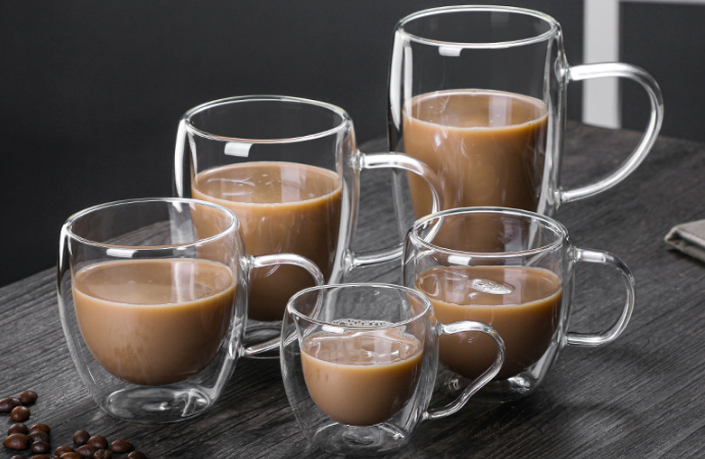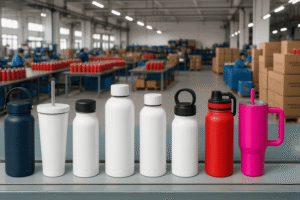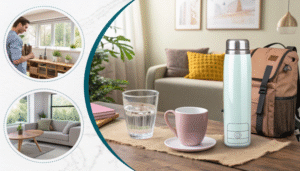You brew that perfect cup of coffee, only to pour it into a dull, opaque mug that hides its beauty. The experience feels incomplete, a letdown after all your effort.
The best glass coffee mugs, like those from Bodum or Fellow, are made from durable borosilicate glass. Double-wall designs provide excellent insulation, while single-wall mugs from brands like Libbey offer a classic feel and showcase your coffee's rich color and texture beautifully.
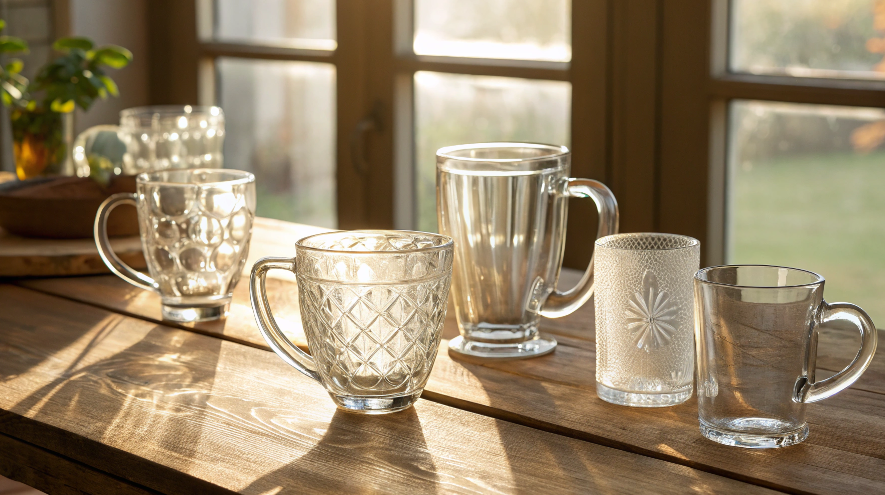
As someone who has built a business around custom drinkware, I used to think a mug was just a mug. Then, I started working with designers like Emma who are obsessed with the entire coffee experience. They taught me that the vessel is just as important as the brew itself. They'd ask me for glass mugs that felt good to hold, looked beautiful on a desk, and, most importantly, didn't interfere with the coffee's taste. This shift from pure function to a full sensory experience has changed how I see coffee mugs forever.
Who Makes the Best Glass Coffee Mugs?
You want to buy a quality glass mug that won't break easily, but the market is flooded with unfamiliar brands. It's hard to know which ones are durable and which are just cheap imitations.
The best glass coffee mugs come from brands that specialize in either coffee gear or high-quality glassware. Bodum, Fellow, KINTO, and JoyJolt are top names known for their thoughtful designs and use of durable borosilicate glass, making them a trusted choice.
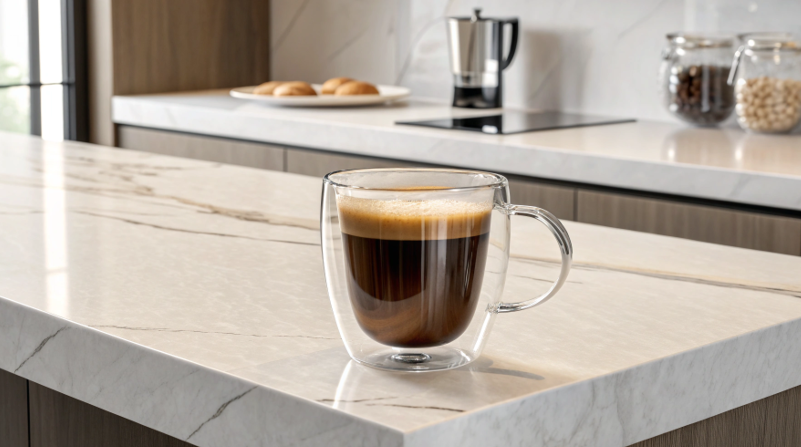
In my line of work, quality control is everything. I can't afford to put a client's logo on a product that will fail. That's why I stick to brands with a proven track record. Bodum is the king of the double-wall glass mug; they essentially perfected the category. Their products are lightweight yet strong. Fellow brings a modern, minimalist design approach; their mugs are engineered for coffee connoisseurs, focusing on things like lip shape and heat retention. Then you have brands like Libbey or Duralex, which have been making tough, tempered glassware for decades. Their classic, clear mugs are nearly indestructible and have a timeless appeal. Choosing one of these brands means you're not just buying a mug; you're buying decades of expertise in glass manufacturing and design.
Comparing Top Glass Mug Brands
| Brand | Key Feature | Best For | Glass Type |
|---|---|---|---|
| Bodum | Double-wall insulation | Everyday use, keeping coffee hot | Borosilicate |
| Fellow | Modern aesthetic, ergonomic design | Serious coffee hobbyists, pour-over | Ceramic & Double-wall Glass |
| Libbey | Classic style, extreme durability | A timeless, sturdy diner feel | Heat-treated soda-lime |
| KINTO | Minimalist Japanese design | Appreciating quiet, simple moments | Borosilicate |
What Glass Mugs Do the Kardashians Use?
You see a chic, minimalist glass mug on a celebrity's social media and instantly want it. But tracking down the exact brand can feel like an impossible treasure hunt, leaving you frustrated.
The Kardashians and many other celebrities are frequently seen using double-wall glass coffee mugs, most famously from the brand Bodum. Their iconic "PAVINA" line, with its curved shape that makes the drink appear to float, is a documented favorite.
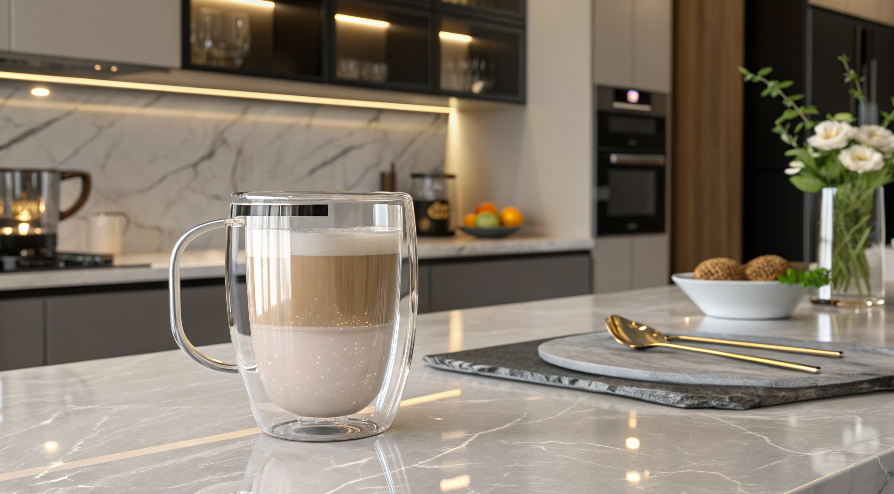
This celebrity trend is something I've seen directly impact my business. After a celebrity posts a picture with a specific style of mug, I get a flood of inquiries from clients who want to create a similar product for their own brand. The appeal of the Bodum-style double-wall mug is twofold. First, it's visually striking. The "floating liquid" effect is incredibly photogenic and makes a simple cup of coffee look luxurious. It elevates the visual experience. Second, it's practical. The insulation keeps the drink hot and the exterior cool to the touch. This fusion of high-end aesthetics and genuine functionality is a powerful combination. It's not just a prop; it's a genuinely good product that also happens to look amazing on camera, making it a perfect fit for a style-conscious audience.
Who Makes the Best Insulated Coffee Mugs?
Your coffee gets cold in a standard glass mug before you can finish it. You want the visual appeal of glass but need the performance of an insulated travel mug for use at home.
For insulated glass coffee mugs, Bodum is the industry leader. Their patented double-wall construction, which traps a layer of air between two sheets of borosilicate glass, provides excellent thermal insulation without needing a lid, keeping coffee hot and hands cool.
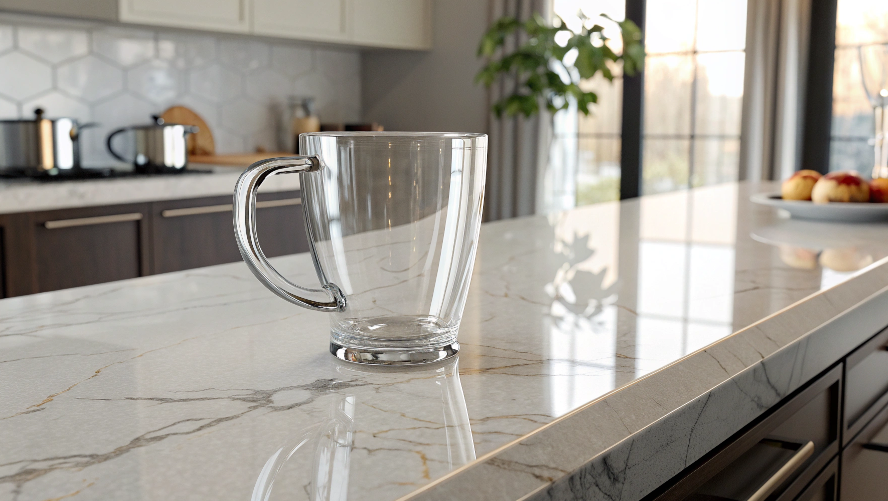
Let's dive into the science, as this is what I explain to clients when they're deciding between different mug types. A standard, single-wall glass mug loses heat very quickly through conduction—your hand gets warm because the heat is escaping. A double-wall glass mug works like a storm window. The air trapped between the two layers of glass is a very poor conductor of heat. This means heat from your coffee can't easily escape, and the outer wall stays at room temperature. The material, borosilicate glass, is also key. It can handle extreme temperature changes without cracking (thermal shock), which is why it's used in laboratory equipment. So, you can pour boiling water right into it without fear. While a stainless steel vacuum-insulated mug offers superior insulation, the double-wall glass mug is the perfect solution for home use where you want both heat retention and the visual beauty of seeing your coffee.
Insulation Method Comparison
| Mug Type | Insulation | Pro | Con |
|---|---|---|---|
| Double-Wall Glass | Air Layer | Good insulation, beautiful, cool to touch | More fragile than steel |
| Single-Wall Glass | None | Great for visuals, classic feel | Poor heat retention, hot to touch |
| Vacuum Insulated Steel | Vacuum | Excellent insulation, very durable | Can impart a metallic taste |
| Standard Ceramic | Material Mass | Retains heat better than single-wall glass | Opaque, can stain |
Why Does Coffee Taste Better in a Glass Mug?
You swear that coffee from a glass mug tastes cleaner and brighter than from your other mugs. You wonder if it's just your imagination or if there's a real reason for the difference.
Coffee tastes better in a glass mug because glass is completely non-porous and inert. It does not absorb any residual flavors, oils, or aromas from past drinks, nor does it impart any taste of its own, giving you the purest possible flavor.

This is not in your head; it's basic material science. Think of it like a pristine canvas. When you pour your coffee into a glass mug, the only thing you taste is the coffee. I often compare it to other materials for my clients. Stainless steel, while excellent for travel, can sometimes add a very faint metallic note that sensitive palates can detect. Plastic is the worst offender; it's porous and can absorb coffee oils over time. That's why an old plastic travel mug can make fresh coffee taste stale. Even some ceramics with a low-quality glaze can interact with the coffee's acidity. Glass, on the other hand, is perfectly neutral. There's also a powerful psychological element at play. Being able to see the rich color, the crema on your espresso, or the delicate layers of a macchiato enhances the sensory experience. We "taste" with our eyes first, and seeing your beautiful brew makes it taste better.
Conclusion
The best glass mugs, often from brands like Bodum, use durable borosilicate glass. Double-wall versions offer insulation, while all glass mugs provide the purest taste, letting you truly savor your brew.
